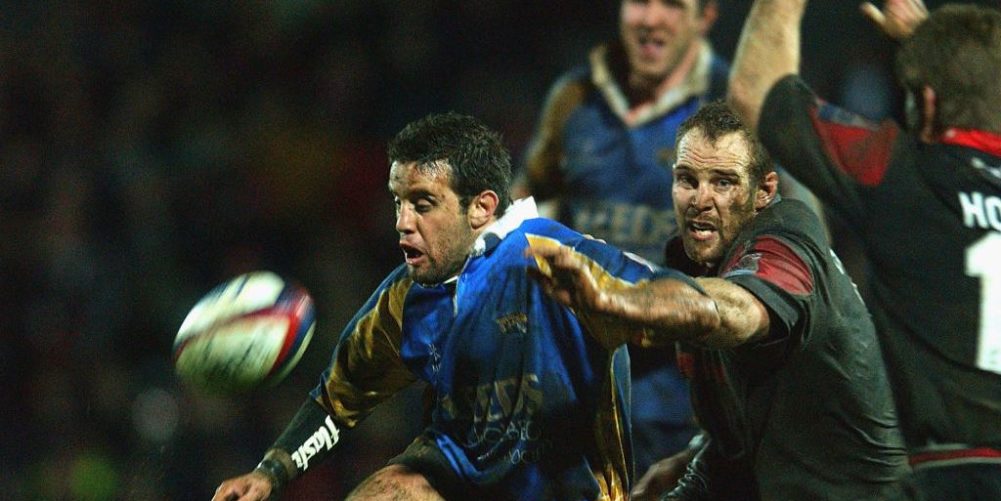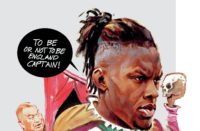AS a teenager, I was told I was too small to play rugby (I’m 5ft 8), and that I would never make it to the top. So, when I look back on a career that saw me win 55 Argentina caps, play at three World Cups and professionally in England and France, I’m very proud of what I achieved.
I have a lot to thank my father for. I was doubting myself and thinking about giving up when the ‘growth spurt’ never materialised but he told me to remember that not everything in life is easy, sometimes you need to redouble your efforts. So, instead of going out to the pub with my mates, I worked on maximising my strengths, and thankfully, the hard work paid off.
In 1992, I made my debut for the San Isidro club, in Buenos Aires, aged 18. We had an incredible team with a lot of Pumas who I’d grown up watching. To show the quality we had, many of my team-mates had been in the side that drew with the touring Australians in 1987.
Playing for the Pumas looks quite an impossible task when you’re a kid, especially one as small as me, but suddenly you are playing for the first XV of your club, then you are called up to play for the Buenos Aires XV and then the national team. Before I knew it, I was on the plane to South Africa for the 1995 World Cup.
I’d made my debut against Uruguay only a couple of months earlier, so it was very unexpected. I was very young and didn’t know what was going on in South Africa or how big a deal it was for them to host the competition.
I was like a kid in Disneyland. Suddenly I was in a World Cup with all my idols. All the players of all the teams had a lunch together and I had my photo taken with Will Carling, Jeremy Guscott, Serge Blanco, Tim Horan, Scott Hastings, Philippe Sella and David Campese…all my idols, all guys I had watched in 1987 and 1991 and I wanted a memento! I didn’t care how it made me look.
I managed to play in the first game against England because of an injury, and we scored two tries and did quite well. I think if we’d have had a better kicker on the day, then maybe we’d have won.
We certainly had a very capable kicker in the next tournament, in 1999. People talk about the winning try I scored in the quarter-final play-off against Ireland but it was the seven minutes at the end, when we defended for our lives, after Gonzalo Quesado’s touchline conversion took us four points ahead, that stands out for me.
In ’99, I had around 30 caps so I was much more experienced and by then, we were a team that expected to make a mark not just make up the numbers.
When we played the first game of that World Cup against Wales, at the Millennium Stadium, that was the first time we had ever played in a packed national stadium. That’s when we started to get used to playing at that level. Before that World Cup, we had three professional rugby players in Argentina, afterwards at least half of the team went to Europe to play professionally – I went to France to play for Grenoble.
We had a brilliant group and beating Ireland in Lens was a great memory for us, especially as we’d lost two coaches in the weeks building up to the tournament. Our captain, Lisandro Arbizu, got us together before we set off for the UK and said that it was down to us and that we must stick together. That really galvanised us.
After Lens, the winners went to Dublin for the quarter-finals. We went to the hotel where the Irish had been staying before our game against them, and they had left all their kit and luggage there as they clearly expected to win and return there instead of going home. One day we were sitting in the lobby and the Irish kit man came to collect all their stuff. That was a funny moment.
Unfortunately, the short turnaround did us no favours and we found ourselves 17-0 down after ten minutes in the quarter-final against France. We got the score back to 30-26 in the second half, but they scored two late tries to make the scoreline worse than it was (47-26). It would be interesting to see what the result would have been had we had more rest.
That World Cup was so important for Argentinian rugby. When we went home, people were talking about rugby, kids started to know much more about the sport, and the game grew.

In 2001, I went to Gloucester and had an incredible year under Philippe Saint-Andre. When I had the call from the agent telling me there was a chance to go there, I said yes straight away. I wanted to test myself against the best week in, week out. Back then, Argentina didn’t have regular fixtures against the top nations so you may only get to play against world-class players every six months. In France, I’d be facing Christophe Dominici one week, and then someone like Thomas Castaignede the next. It was the same in England; Gloucester is such an incredible place to play rugby with the Shed, the passionate crowd, and the team we had was very good.
My experience in Leeds is very emotional. I had so many incredible experiences, made friends for life, and my first two kids were born there. Phil Davies and Tom Palmer even named a lineout move after my eldest son, Mateo. What I found in Leeds was a star team, not a team of stars; the togetherness was incredible. At the end of that first season, we qualified for the Heineken Cup.
That summer, I went to Australia to play in my third World Cup and while we fell short of expectations – losing to Ireland by a point to miss out on the last eight – I was determined to enjoy the experience as much as I could. I knew this was going to be my last World Cup, so I made sure I soaked up the atmosphere as we walked out for the very first game against Australia, for what was then a record Test crowd at the Telstra.
After three years at Leeds, I decided it was time to take the family back to Argentina, and now I’m back where it all began – at San Isidro – with my old mates, teaching the kids rugby skills and trying to help the club out when my TV commitments with ESPN allow. One dayI’d love to bring the family over to Leeds, to see where I played and the old house. I won’t ask John Carey, the old team manager, to interpret though, his accent was impossible to understand!
– as told to Jon Newcombe























